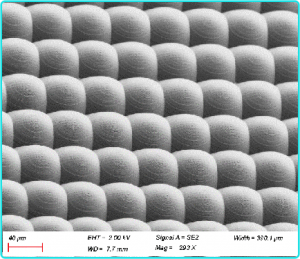
Thin Film Preparation - PVD
Until now, the most commonly used physical methods have been evaporation and sputtering. Both are gas-phase methods in which the source material is transferred to the substrate one by one in situ. These are often referred to as physical gas deposition (PVD). PVD is typically performed in a high vacuum chamber to minimize interferences with the ambient gas species.
Evaporation
There are two main types of evaporation. They differ in the method of supplying power to the source. In one method, a source in the form of a pellet is placed in a metallic evaporator⾈ and heated by a very high current in the range of 100 A. This is called resistive heating evaporation. An advantage of this technique is its simplicity, since only a high current (low voltage) DC power supply is needed to power the source. The disadvantages are lack of heating efficiency and contamination. Because all parts of the heating circuit are hotter than the source particles, they will also evaporate to some extent, which can lead to contamination and de-aeration.
The second method is electrode beam heating. In this technique, the electrons emitted from the heated filament are accelerated by a high voltage in the range of 10 kV and focused on a small point on the source particle. Since this process is done in a vacuum, the electrons can be easily accelerated and manipulated by the magnetic field without colliding with the gas substrates. This method is more efficient because the energy can be transferred precisely to the source particle with minimal heating of the other fixtures. As a result, contamination is kept to a minimum. A disadvantage of this method is the complexity of the power supply. The design of a high voltage power supply is more complex than a low voltage high current power supply. Safety features are also a major consideration, as 10 kV DC can be lethal. Nevertheless, electrode beam evaporation is still one of the most commonly used evaporation methods in thin film development.
Due to the physical trajectory of the evaporating material and the high vacuum environment, the films created by evaporation tend to be oriented and non-conformal. This can be an advantage in many applications, such as stripping lithography. The highly directional nature of the evaporation flux is also used in a special class of films called nanostructured films. These films do not contain randomly stacked isotropic structures, but rather contain nanometer columns and nanometer manual structures that can be used to design the electrical and optical properties of these films. A class of patterning called shadow mask lithography also relies on line of sight deposition, for which evaporation is not suitable.
Sputtering
Sputtering deposition uses electrically excited gas isotropes in a vacuum system. The ions in the plasma are accelerated toward the cathode and neutral protons are ejected from the cathode surface during bombardment. The ejected proton accumulates on all surfaces, including the substrate surface. Therefore, the cathode must be composed of the same source material as the deposited material. Unlike evaporation, here the source material is kept at a low temperature behind the water by flow cooling. The atoms are ejected from the source (referred to in this context as the destination) by momentum transfer rather than by heat. This is the fundamental difference between sputtering and evaporation. Due to the momentum of the event, the resulting film will be more dense and dense compared to evaporation. Low target temperatures also allow for the deposition of certain compounds, such as oxides and nitrides, which might otherwise decompose at the high temperatures encountered during evaporation. However, for complex compounds, pulsed laser deposition is the first technique of choice over sputtering.
Sputtering is more versatile than evaporation and is more widely used in industrial processes because targets and isotropic sources can be constructed in a variety of shapes to accommodate different coating configurations. They can be round, rectangular, cylindrical, or other special shapes to meet specific needs.
We offer fastMEMS device / micro and nanostructure processing design services, Feel free to leave a message to inquire.
Related Products
Related Reading
Micro and Nano Processing | MEMS Fine Processing (II)
Micro and Nano Processing | MEMS Fine Processing (II) Microfabrication Technology
Micro and Nano Processing | MEMS Fine Processing (III)
Micro and Nano Processing | MEMS Fine Processing (III) MEMS-oriented
Micro and Nano Processing | MEMS Fine Processing (IV)
Micro and Nano Processing | MEMS Fine Processing (IV) 1.3 Photolithography


